Scouting on the Home Front: They were prepared
The Boy Scouts are carrying on
‘The Boy Scouts are carrying on’ was the slogan of the Scout Movement during the Second World War, which happened between 1939 and 1945.
By the end of 1940, over 53,000 Scouts had trained to undertake over 170 National War Service jobs.
Scouts were proud of its record and commissioned a booklet entitled ‘They Were Prepared’, as well as a film called ‘Men of Tomorrow’ in 1941 to tell the story of their efforts.
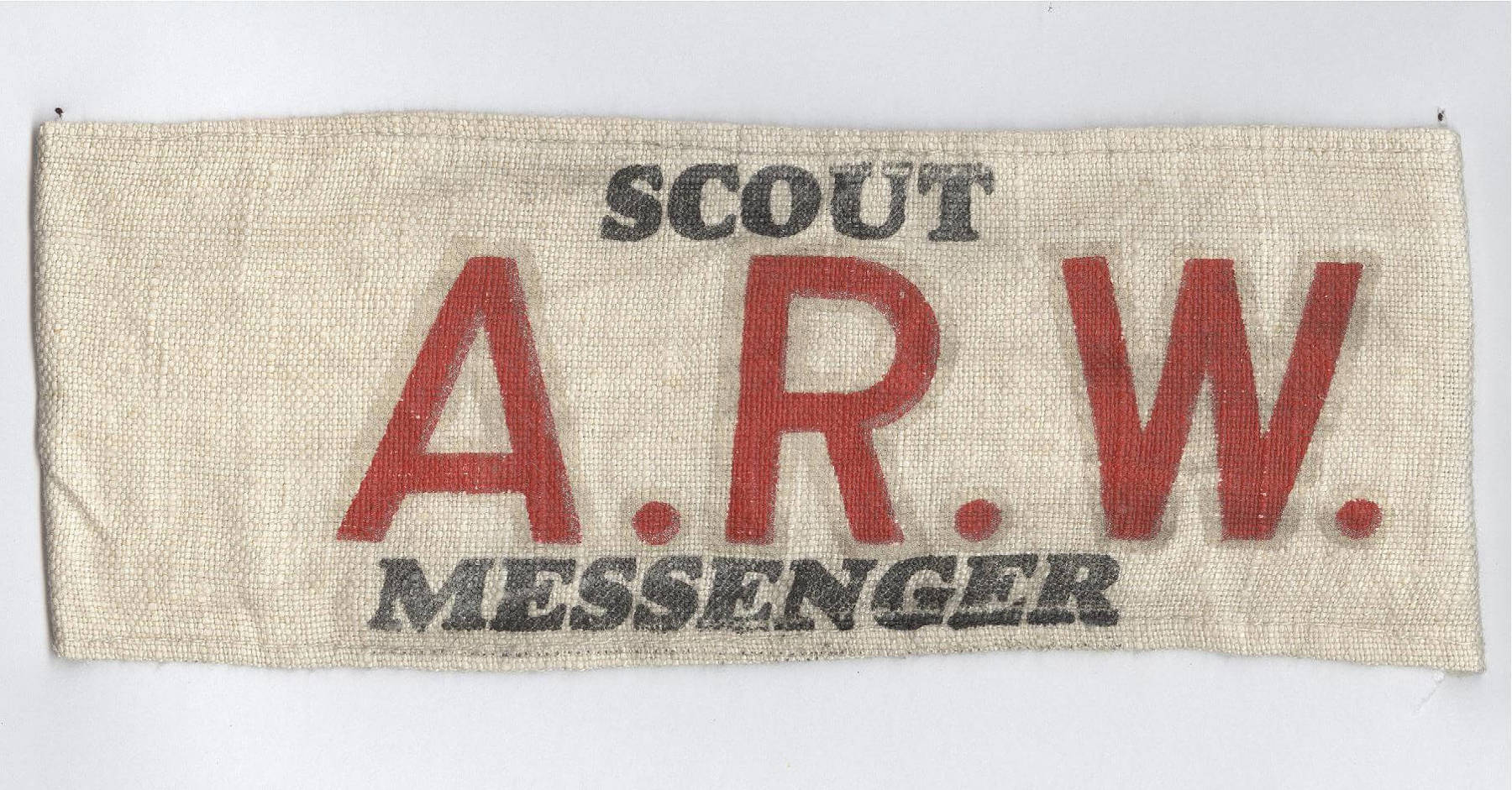
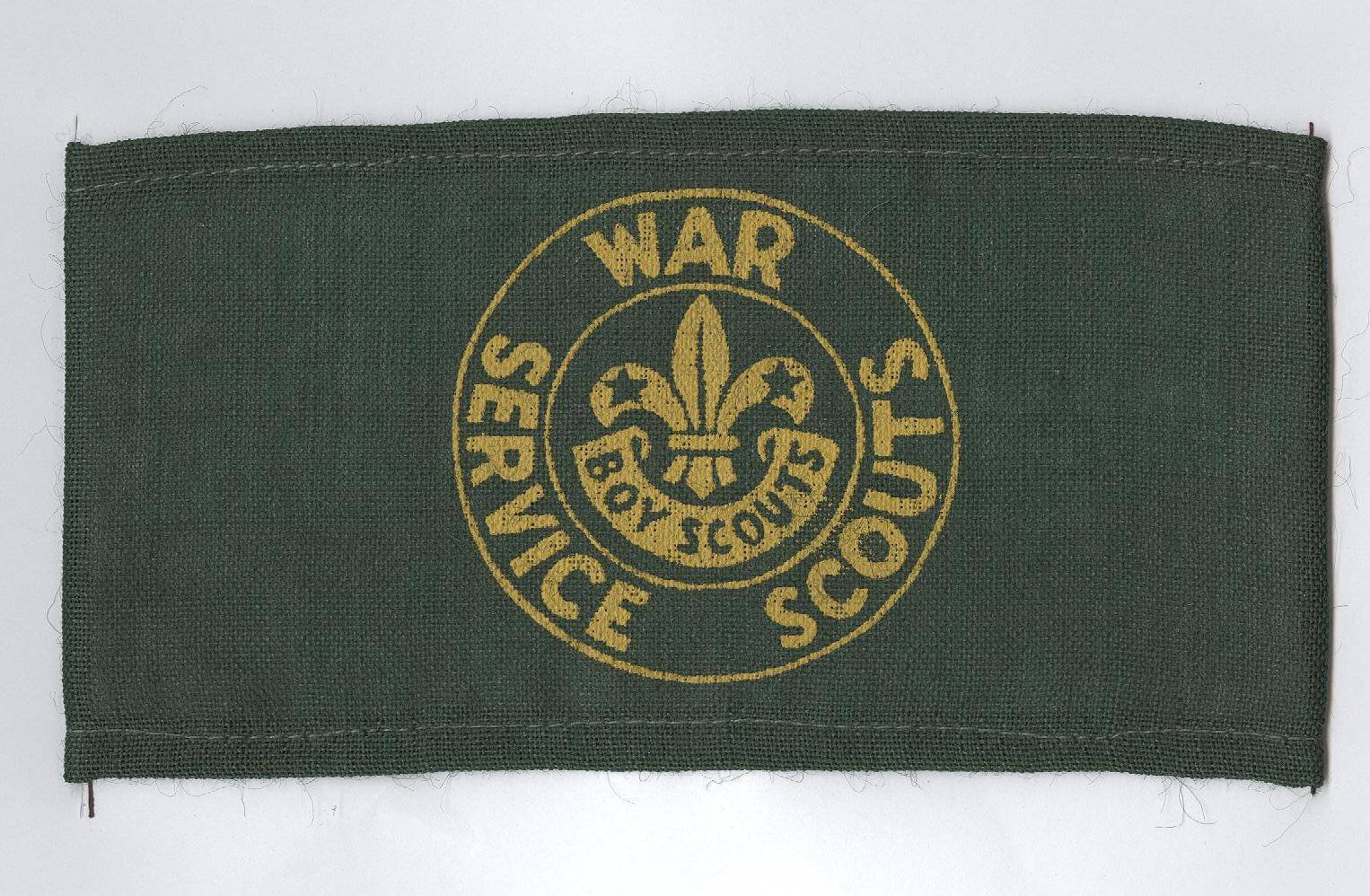
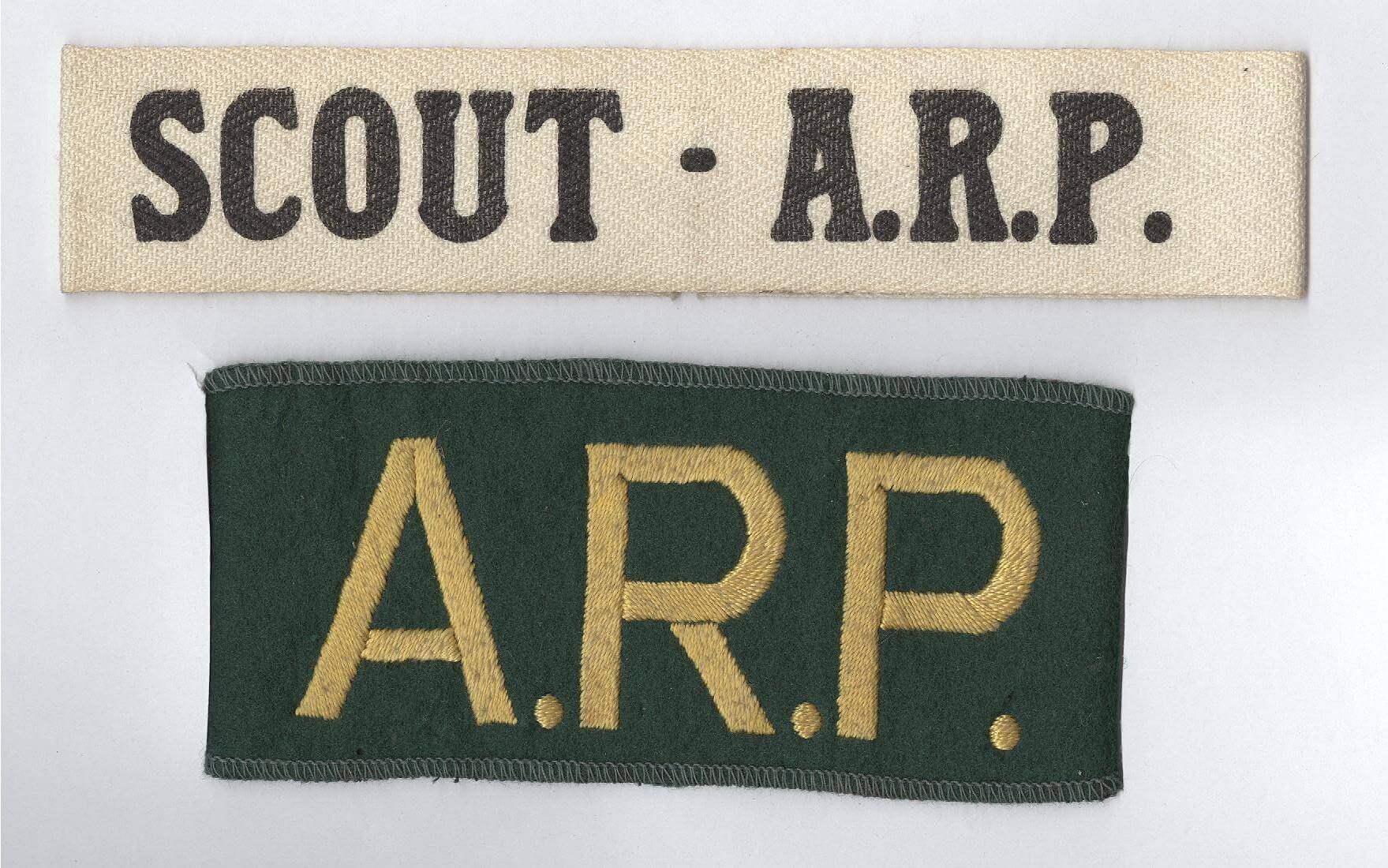
These badges and armbands were issued to Scouts undertaking official war work, as described below.
Evacuation
On the 1 September 1939, Operation Pied Piper began. This was the code name of a mass evacuation of civilians, particularly young people, from areas thought to be at risk from air raids.
During the Second World War, over 3.5 million people in the UK were relocated.
The Government had been planning the evacuation scheme and had approached civilian organisations to assist with the programme.
Older Scouts were used to help organise groups of children, carry luggage and offer comfort as necessary.
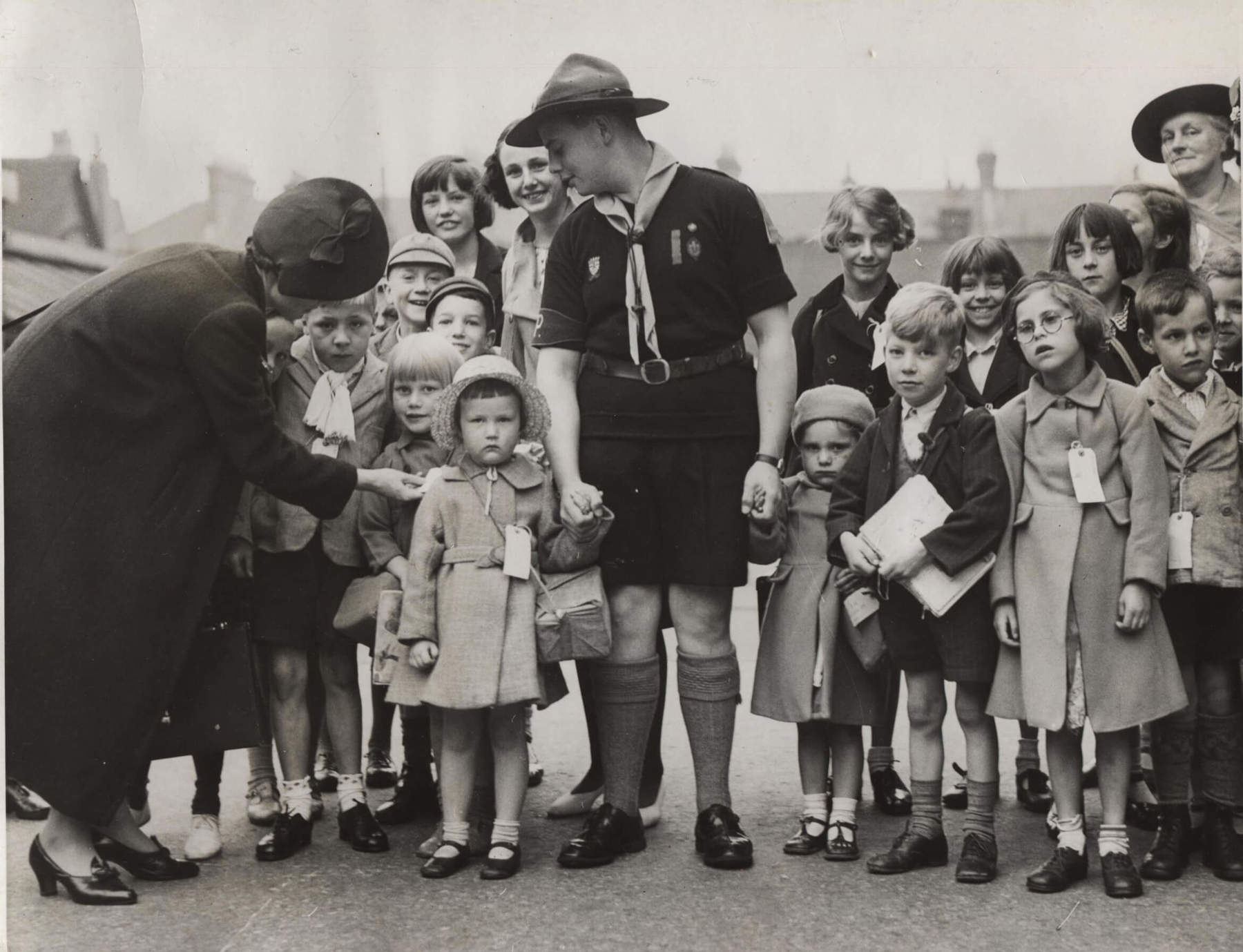
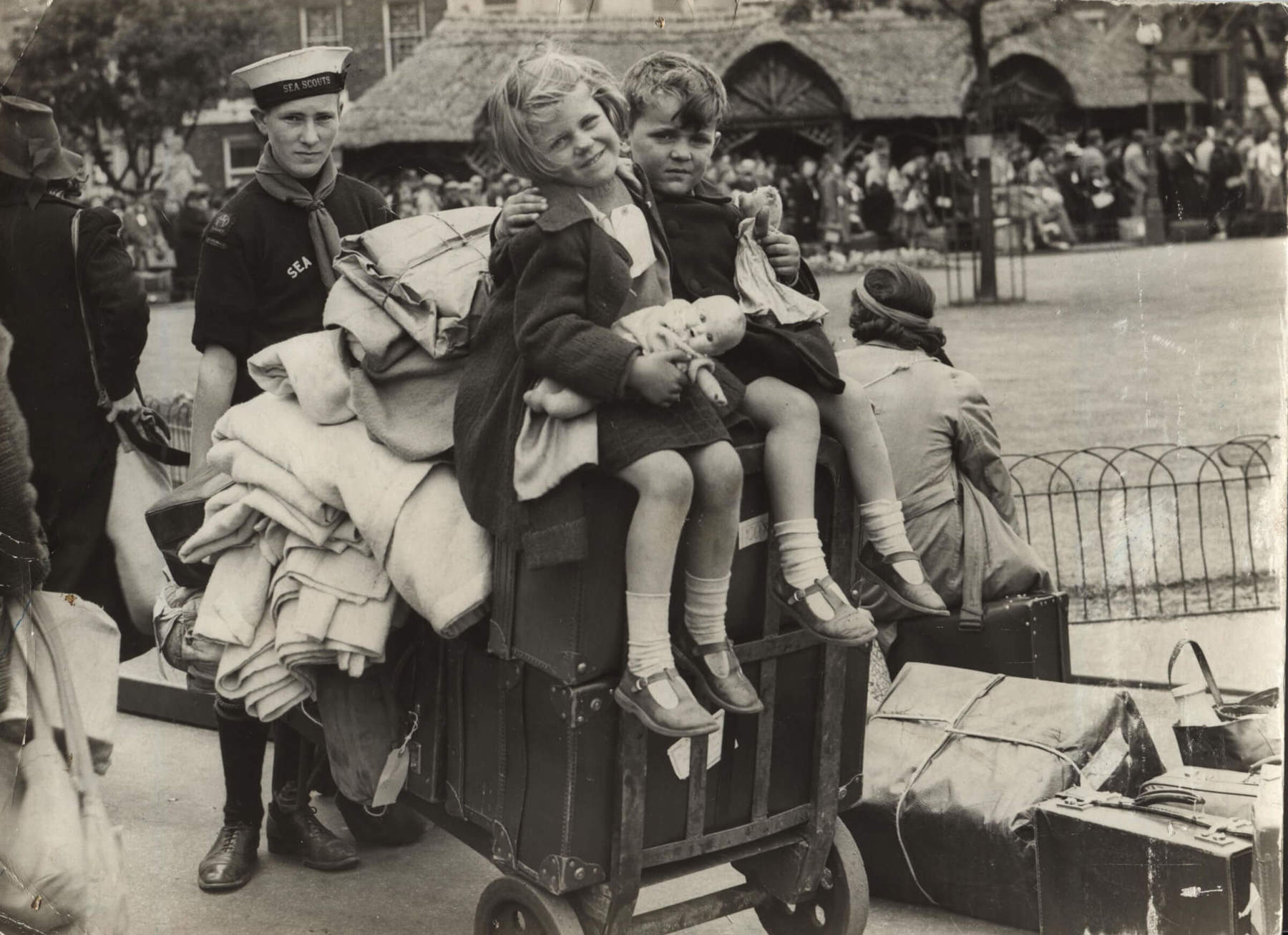
The members of some Cub Packs and Scout Troops were evacuated on mass, as the programme was organised geographically. Adult volunteers tried their best to keep the Packs and Troops going to offer young people some continuity.
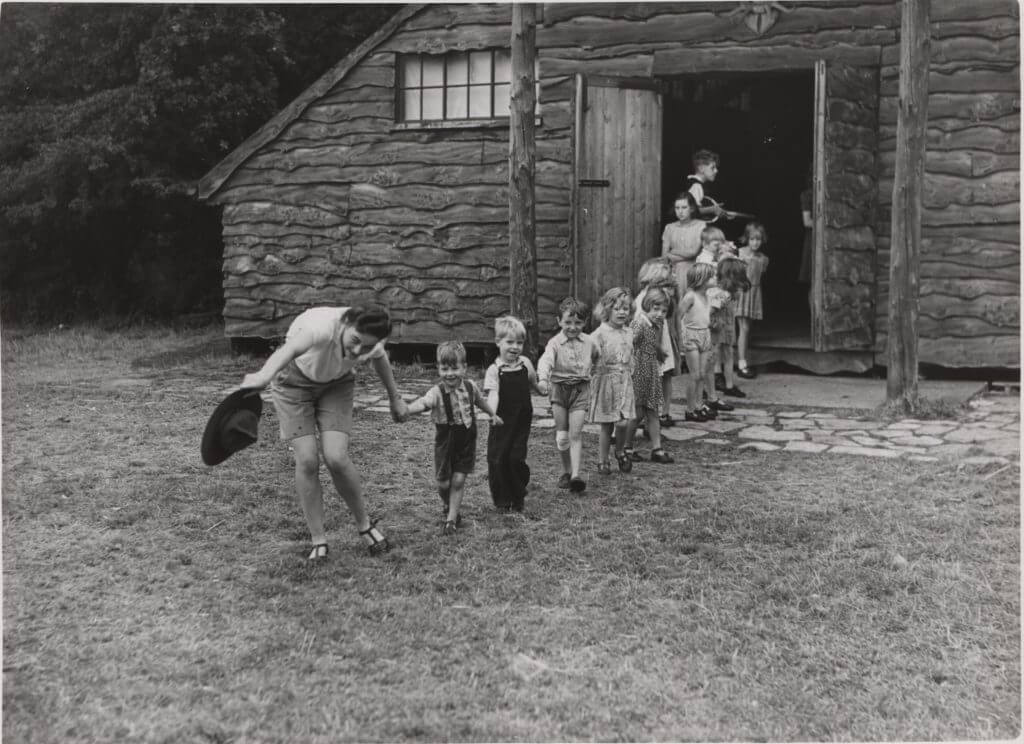
Air Raid Precautions
Scouts were asked to help prepare the country for air raids, including helping to prepare for the government imposed blackouts.
Every night, when it got dark, cities would go into blackout. Street lights were switched off, blackout curtains were used and car headlights covered except for a narrow slit. This was to make sure cities could not be seen from aeroplanes overhead. People had to cover up all windows at night to make sure that no light escaped that could aid enemy bombers to find their targets.
Teams of Scouts helped by painting white lines on the edge of roads making them more visible in the dark.
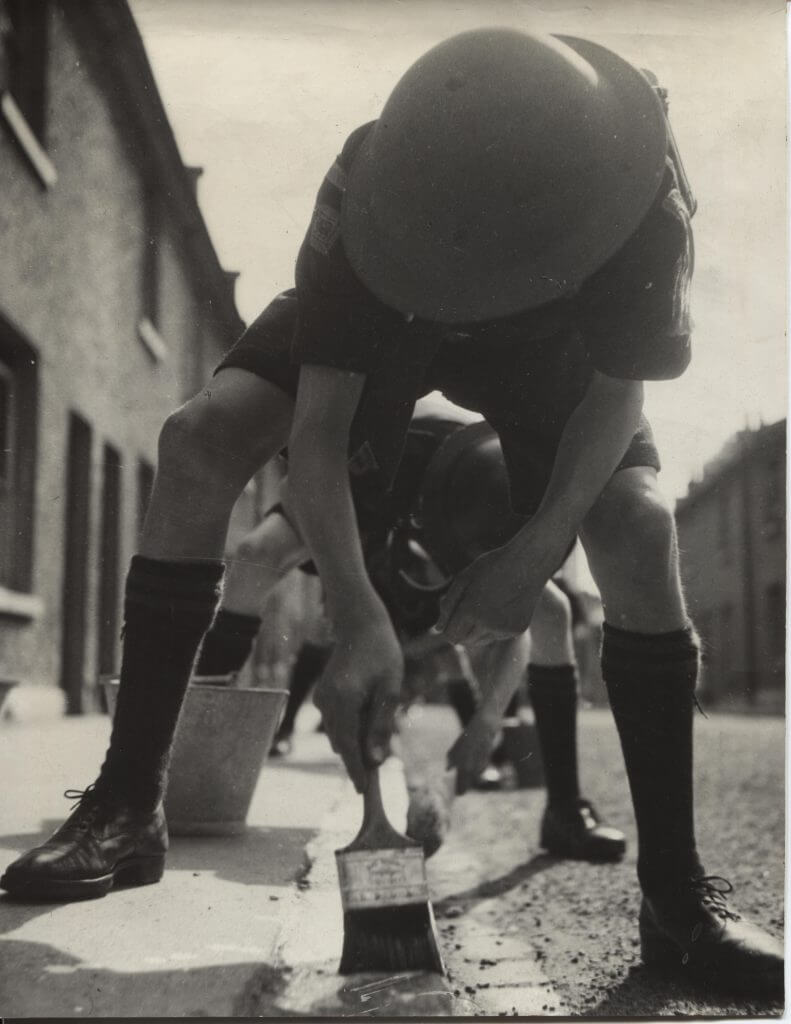
Teams of Scouts could be booked to help put up air raid shelters. There were two main types of shelters. One type of shelter was Anderson shelters, which could be dug and built in the garden. The other type were Morrison shelters, which could be built inside the house. By the end of 1941, over 500,000 Morrison shelters had been issued to households across the UK.
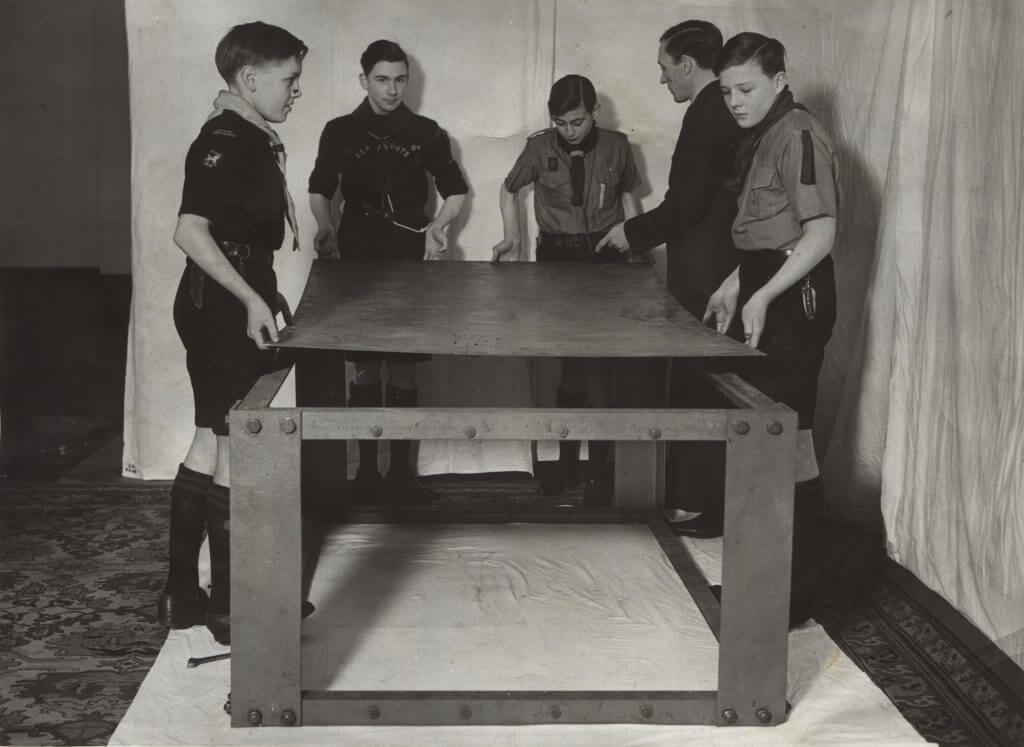
The Blitz
The Blitz was when major British towns and cities were targeted with bombings by Germany.
During the Blitz, which lasted from September 1940 to May 1941, Scouts supported civilian organisations. This included the Air Raid Warden’s Service, fire and ambulance services.
Scouts worked in very dangerous conditions, as fire watchers, stretcher bearers and carrying messages. They even supported the evacuation of hospitals during air raids and carried out first aid. These were all tasks which the Scout training and programme would support.
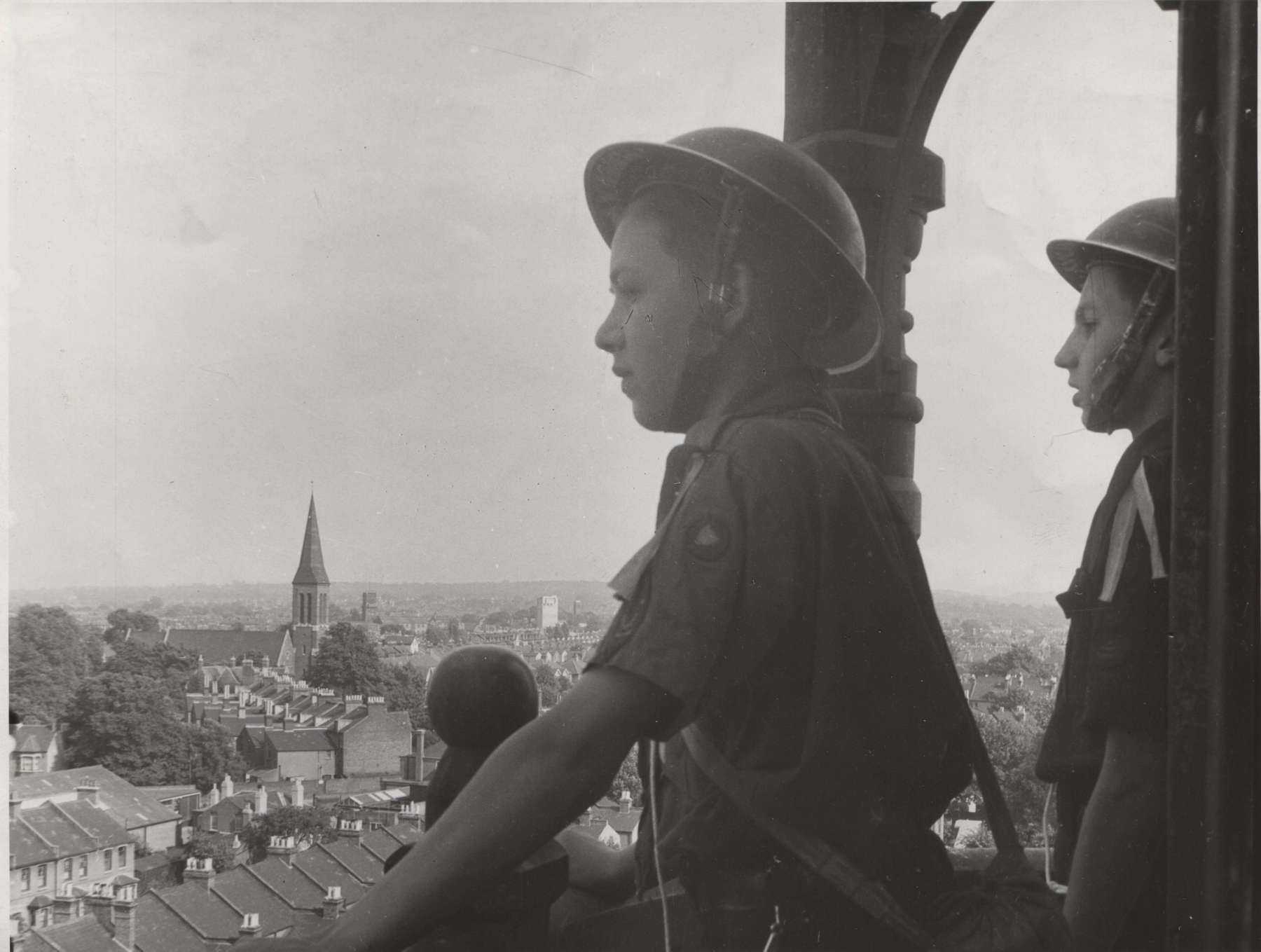
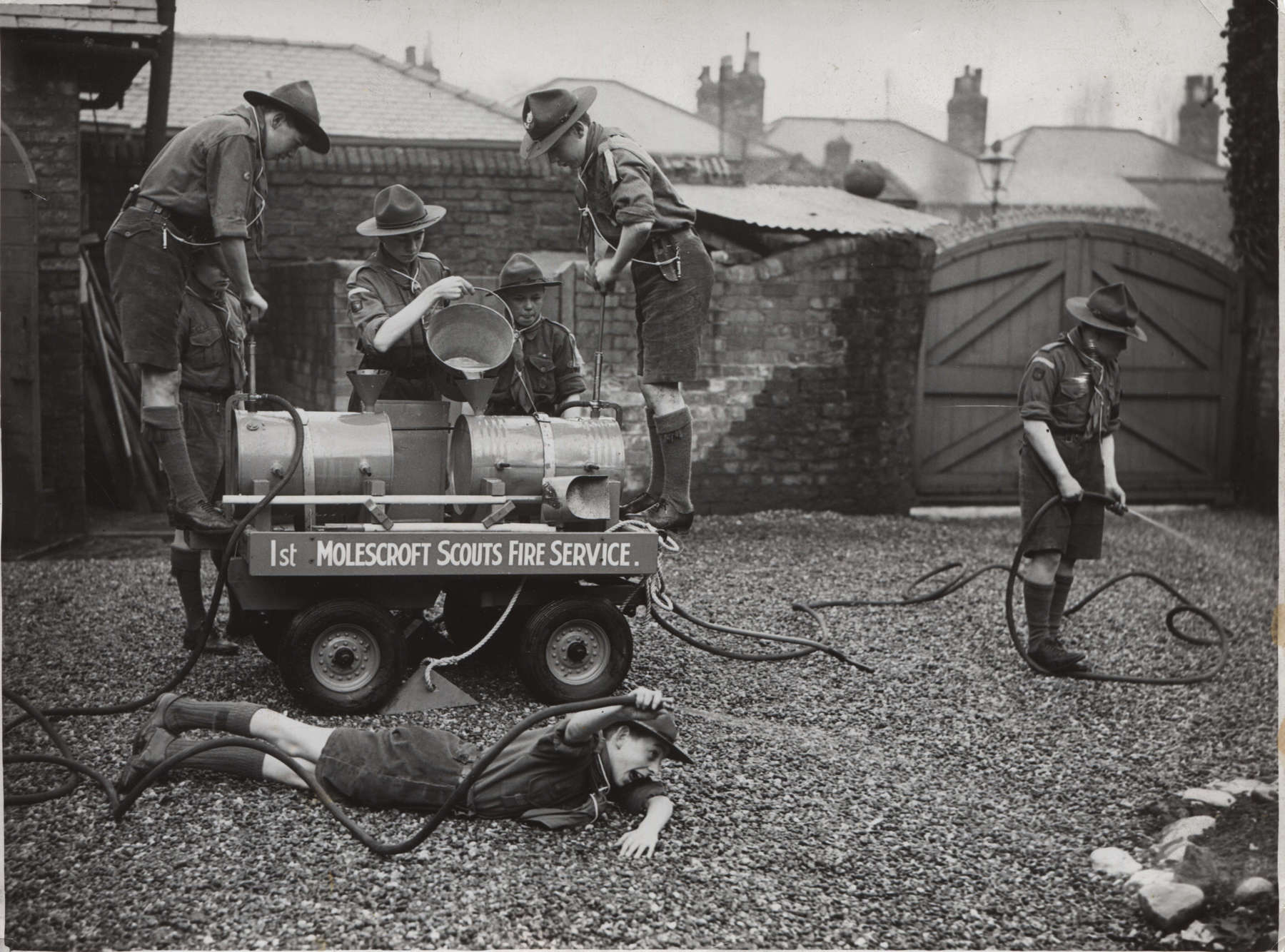
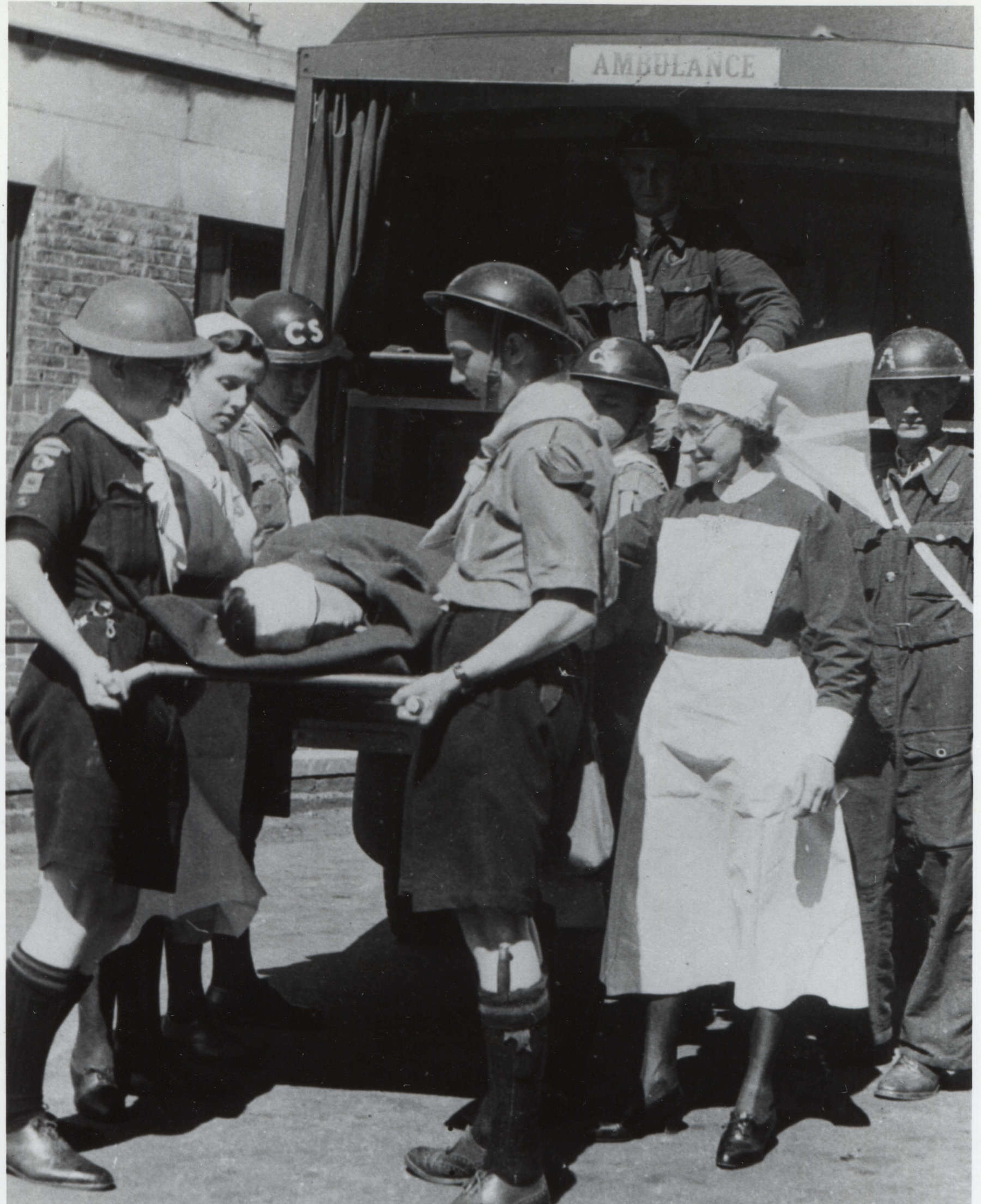
The bravery of many Scouts has been recognised through the Scouts gallantry award scheme. These included John Flinn of Sheffield. A local newspaper wrote up a report of John’s actions, which said:
‘In a hail of shrapnel, Flinn took charge of a woman who had been rescued from a demolished house, and wheeled her on a grocer’s barrow to a first-aid post. Flinn wore a saucepan on his head to protect himself during the air raid.’
John was awarded the Gilt Cross, the fourth highest gallantry award for facing ‘moderate risk’ in the course of his duties. When he won the award, he was a Patrol Leader with 36th Sheffield (St John’s Ranmoor) Scout Group.
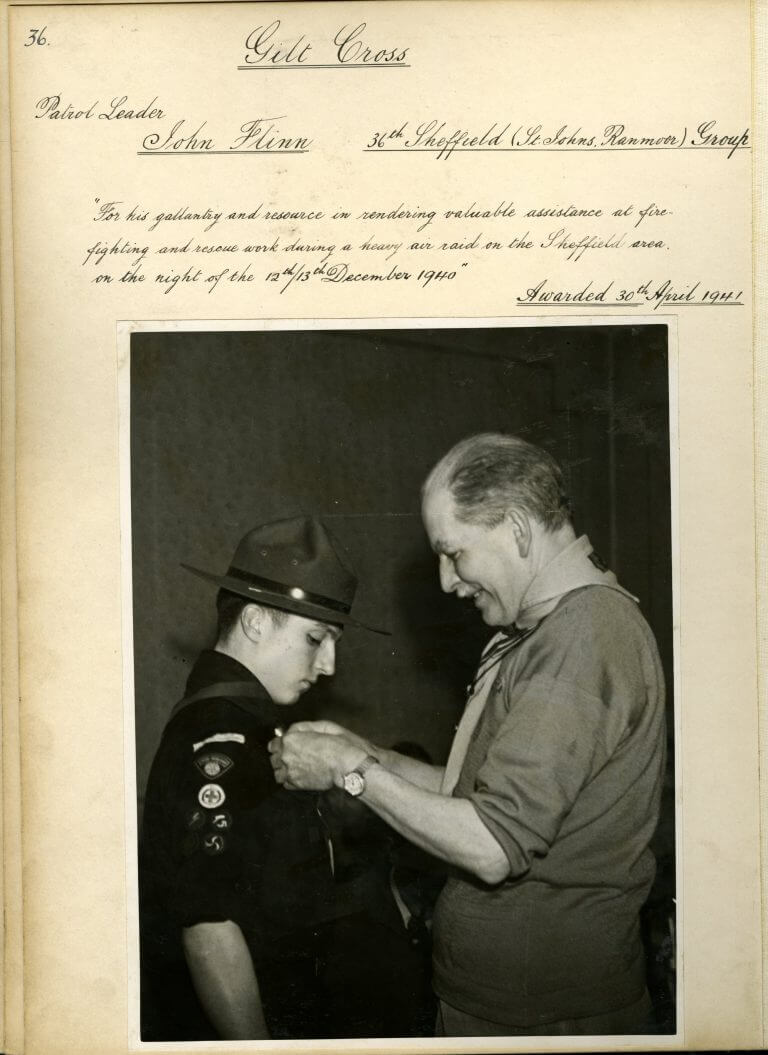
Sadly, not all Scouts undertaking this kind of work survived.
One such case was 17 year old Frank Davis, from 11th Bermondsey and Rotherhithe (St James’) Scout Group. Frank died on 8 December 1940 at Trinity Church, Dockhead, London. Frank was awarded the Bronze Cross for conspicuous bravery and devotion to duty as an Air Raid Warden. Having rescued a fellow Scout Messenger, he was killed by enemy action.
You can visit the Second World War Roll of Honour to see if any Scouts from your area received awards for action during the Second World War.
Home Guard
In 1940, the Home Guard was formed from adult volunteers who weren’t eligible for active service due to age, health or their occupation. Their role was to slow down the enemy advance in case of invasion. Scouts helped teach skills, such as tracking, first aid and bushcraft, to this newly formed force.

Working the land
The Dig for Victory campaign was introduced to encourage people to convert land for food production. This was to help increase the amount of home-produced food, limiting the reliance on imported goods. Scouts helped maintain plots of land, including a war garden set up in the grounds of a hospital.
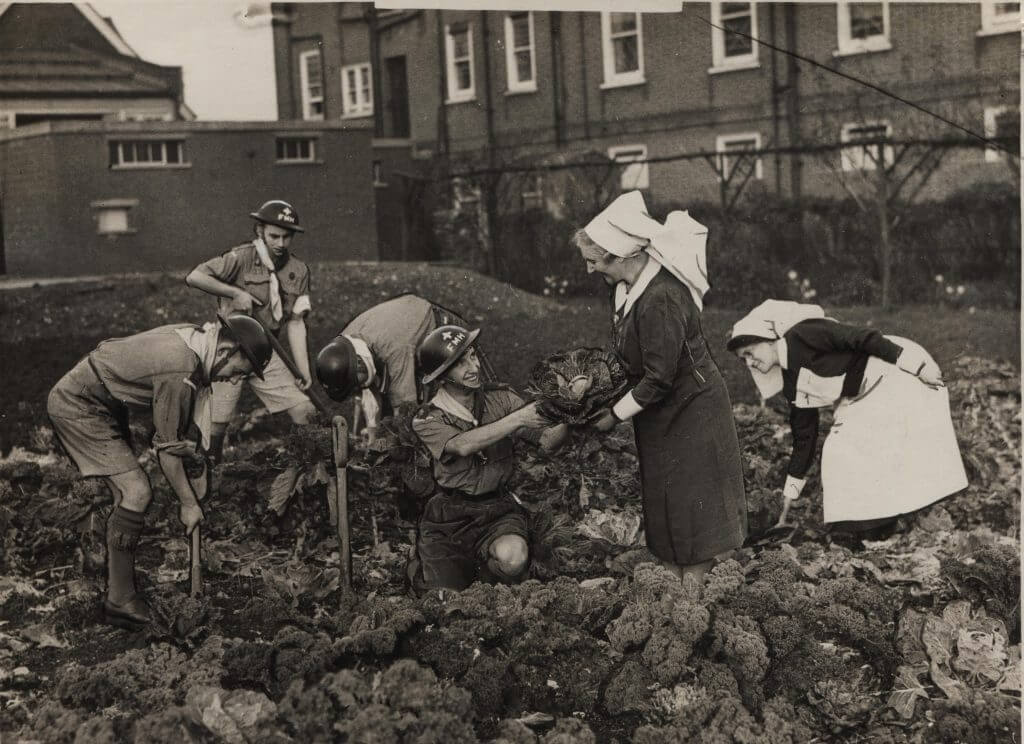
Scouts also carried out other tasks such as working with the Women’s Timber Corp to fell wood for the war effort. They also helped collect plants which could be used for medical purposes including sphagnum moss which has antiseptic properties and could be used in wound dressings.

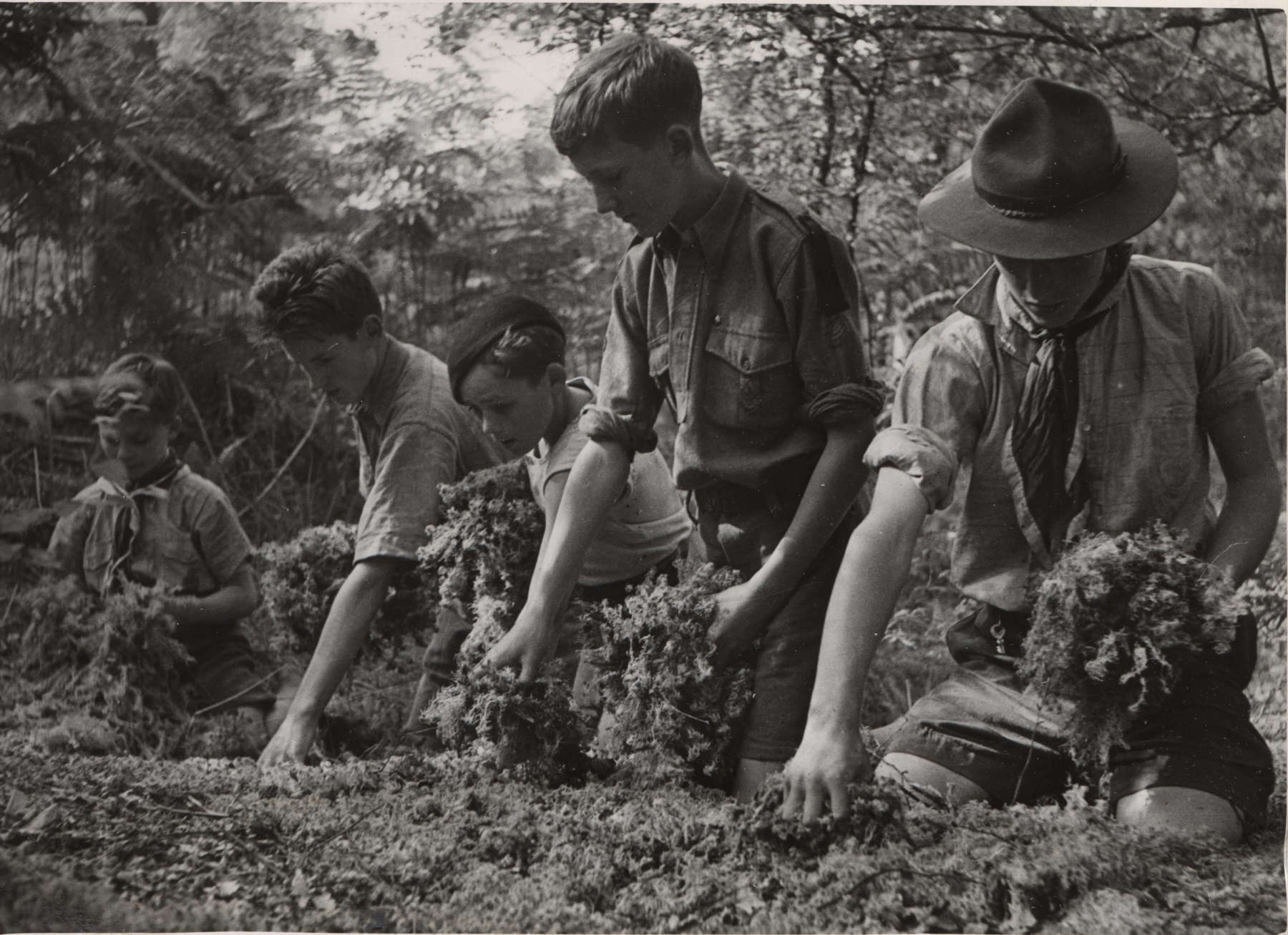
Community Support
Scouts also carried out a range of other jobs, including supporting other civilian services with provision, such as service cafes for those in the armed forces. Fulham District Scouts worked with the YMCA to serve refreshments from vans.
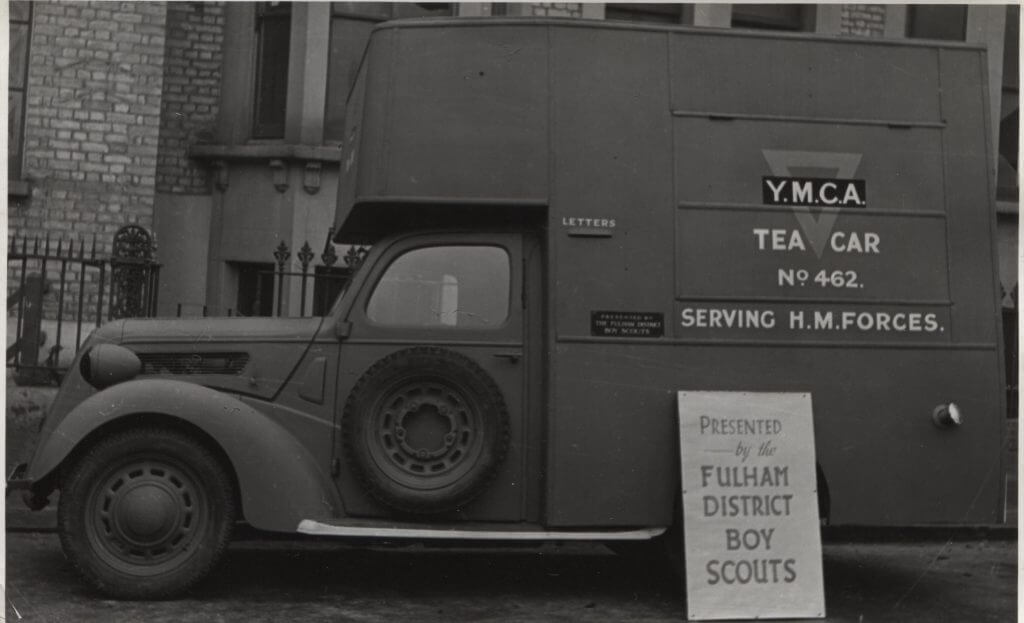
Campaigns, such as the collection of waste paper and scrap metal to raise funds to support the war effort, were also attractive to Scouts wanting to do their bit.
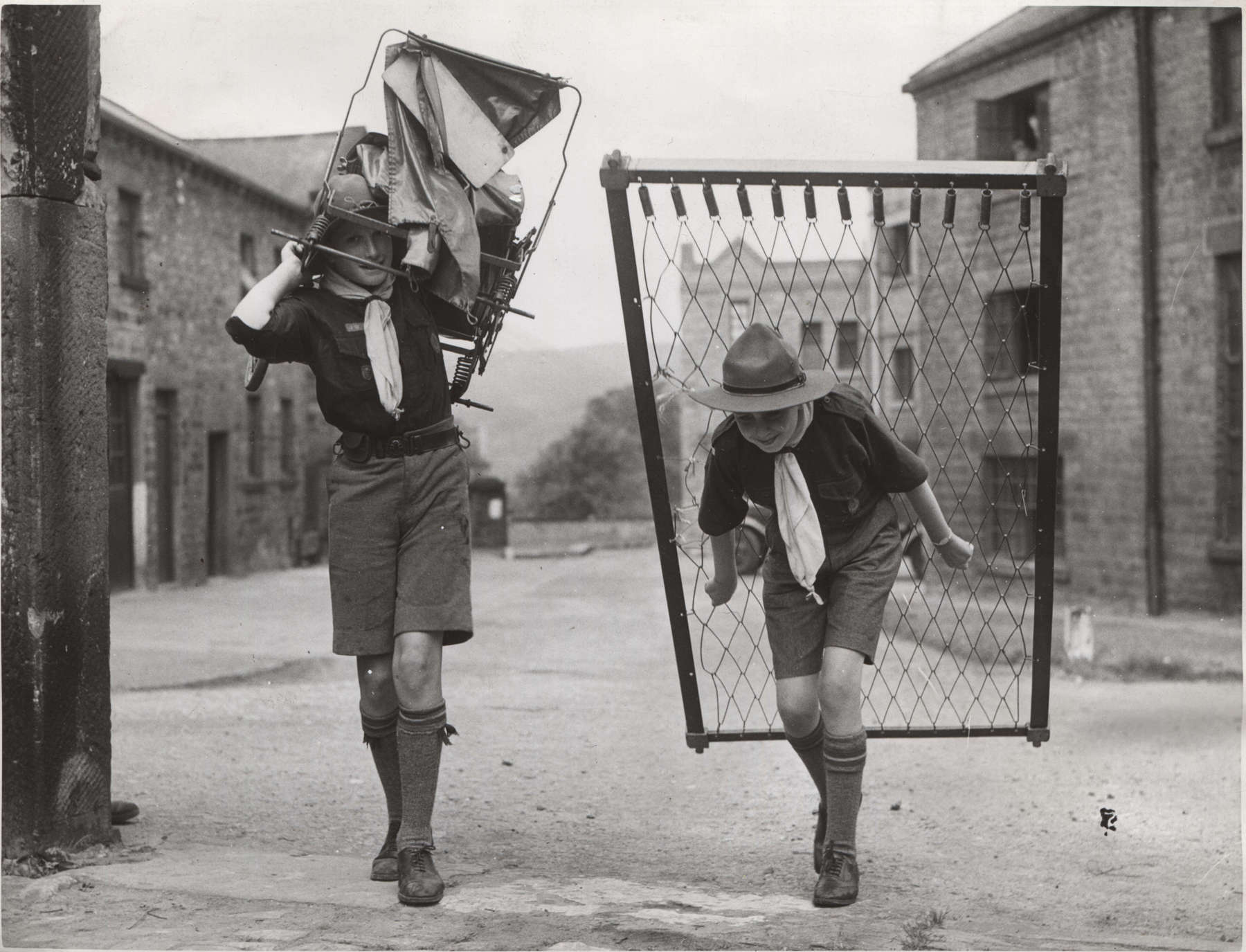
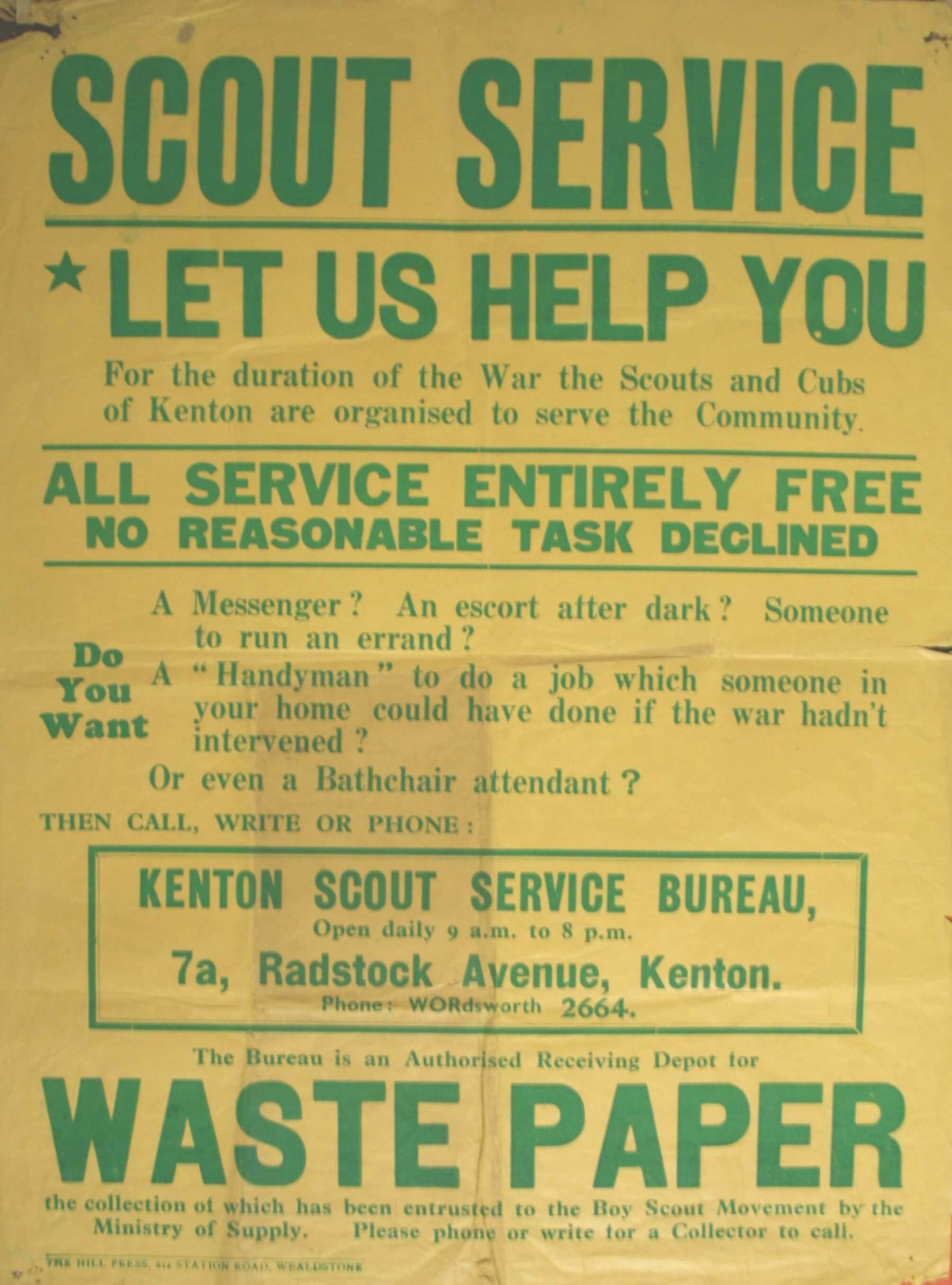
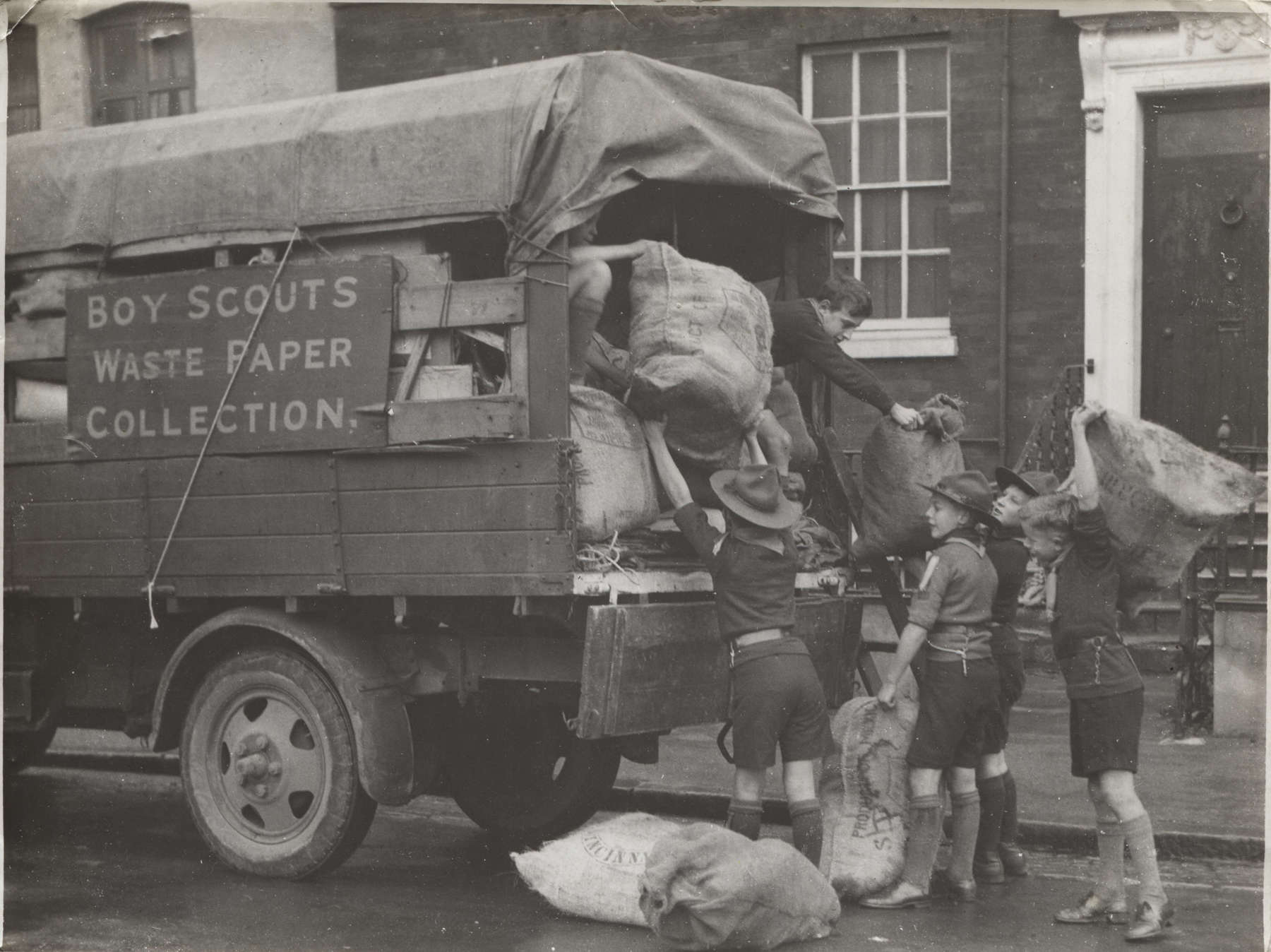
With so many adults called up to do war service, many Patrol Leaders stepped into their volunteer leader roles to ensure Scouts carried on. A special certificate was issued to those who took on this responsibility.
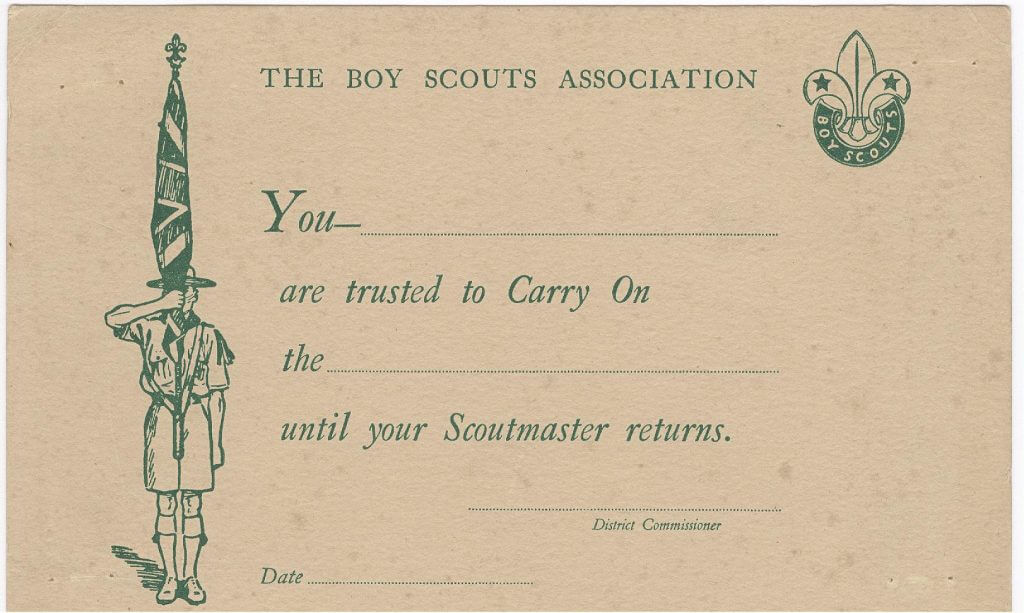
Visit our learning resources for an activity exploring the badges Scouts during the Second World War could earn.